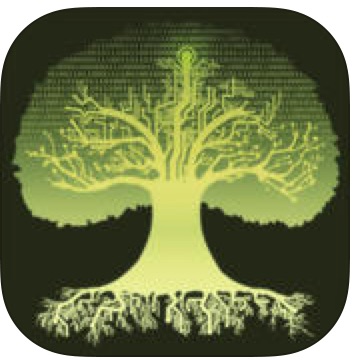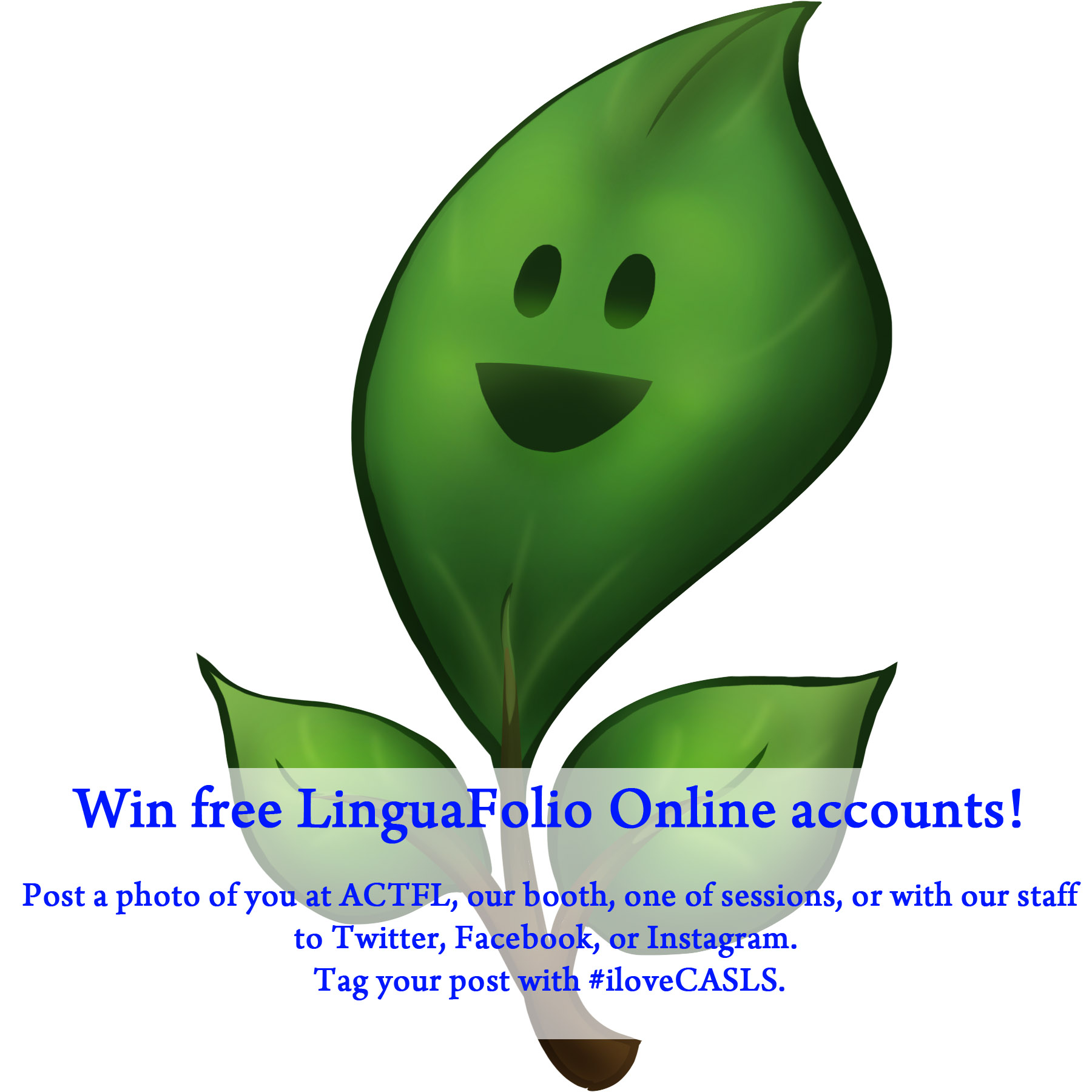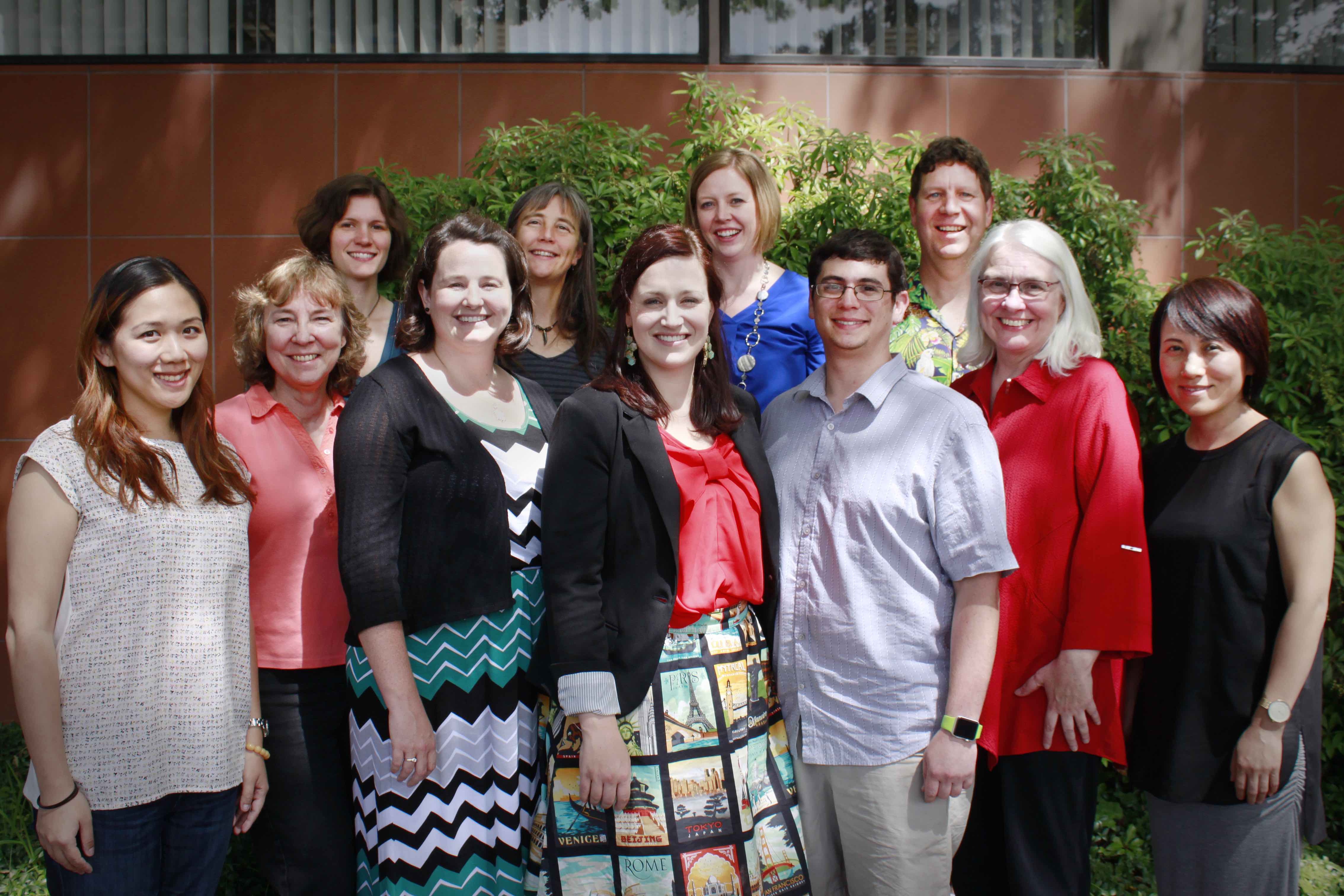Contents
Content Type: 1
Title: Fluency and Accuracy Activities: Striking a Balance
Body:
English teacher Robert Sheppard addresses the tension between fluency (ease of production) and accuracy and describes the sort of activities that address each aspect of proficiency separately in this blog post: http://blog.tesol.org/fluency-and-accuracy-activities-striking-a-balance/
Here is a related blog post urging an eclectic approach that address both conscious and unconscious learning: http://frenchteachernet.blogspot.com/2015/10/the-best-of-both-worlds.html
Source: TESOL Blog
Inputdate: 2015-10-24 10:56:04
Lastmodifieddate: 2015-10-26 03:09:30
Expdate:
Publishdate: 2015-10-26 02:15:01
Displaydate: 2015-10-26 00:00:00
Active: 1
Emailed: 1
Isarchived: 0
Content Type: 1
Title: Circumlocution for Beginners
Body:
Circumlocution is a powerful skill for second language interaction. As Sara-Elizabeth Cottrell writes, “circumlocution is the tool learners use to change incomprehensible input into comprehensible input.” But how do you teach circumlocution with novice students whose language skills are already so limited? Here is one idea from a recent blog post: http://musicuentos.com/2015/10/early-circumlocution/
Source: Musicuentos
Inputdate: 2015-10-24 10:56:41
Lastmodifieddate: 2015-10-26 03:09:30
Expdate:
Publishdate: 2015-10-26 02:15:01
Displaydate: 2015-10-26 00:00:00
Active: 1
Emailed: 1
Isarchived: 0
Content Type: 1
Title: International Student/Teacher Essay Contest, 2015: Goals for a Better World
Body:
From http://www.carnegiecouncil.org/news/announcements/372
Carnegie Council for Ethics in International Affairs announces its seventh annual International Essay Contest, open to teachers and students anywhere in the world.
This year, you are asked to write about one of three selected Sustainable Development Goals. The SDGs will replace the Millennium Development Goals when they expire at the end of 2015.
This competition is open to teachers and students of all nationalities.
All teachers, at whatever level, are eligible.
All students, from high school students through graduate students, are eligible. Non-students are automatically disqualified.
Collaborative essays between students and teachers are welcome.
Competition deadline: January 5, 2016
For full details go to http://www.carnegiecouncil.org/news/announcements/372
Source: Carnegie Council
Inputdate: 2015-10-24 10:57:36
Lastmodifieddate: 2015-10-26 03:09:30
Expdate: 2016-01-05 00:00:00
Publishdate: 2015-10-26 02:15:01
Displaydate: 2015-10-26 00:00:00
Active: 1
Emailed: 1
Isarchived: 0
Content Type: 1
Title: Guidelines for Teaching with Food
Body:
From http://us1.campaign-archive1.com/?u=a9f6c180278a62e01d817ae4b&id=e778390e72&e=c00fca3321
Food is a good way to introduce young people to a variety of countries and cultures. To help educators design learning units using cooking, Asia Society has compiled several resources in the form of "quick sheets" and blog posts.
Follow the Food: Cooking Our Way to Global Understanding: http://asiasociety.org/global-learning-beyond-school/follow-food
Quick Sheet on Global Learning and Cooking: http://asiasociety.org/files/uploads/522files/global-learning-cooking-quick-sheet.pdf
Learn more about Asia Society’s Quick Sheets at http://asiasociety.org/global-learning-beyond-school/global-learning-out-school-time
Source: Asia Society
Inputdate: 2015-10-24 10:58:26
Lastmodifieddate: 2015-10-26 03:09:30
Expdate:
Publishdate: 2015-10-26 02:15:01
Displaydate: 2015-10-26 00:00:00
Active: 1
Emailed: 1
Isarchived: 0
Content Type: 3
Title: From Consuming to Engaging: Creating Space in Our Classrooms for Media Reflection
Body:
Holly Zaher teaches mathematics and Theory of Knowledge, the core course for the International Baccalaureate Diploma Programme. She holds a Master’s of Divinity and her research interests include the role of curiosity in inquiry and the intersection of cultural studies and theology.
“By 2015, it is estimated that Americans will consume both traditional and digital media for over 1.7 trillion hours, an average of approximately 15 and a half hours per person per day.” (http://www.marshall.usc.edu/faculty/centers/ctm/research/how-much-media)
Fifteen and a half hours per person per day. Each time a student in a class in my high school (thinks he or she) sneaks a glance at their smart phone to continue the latest text conversation. Every time a couple of tweens watch a video on YouTube. All of these add to those 15 and a half hours.
While some of that time consists of our students using media to express their identity – through Wii avatars, text messages, YouTube videos, Instagram photos, snapchats, etc. – much of that time consists of students consuming media, “absorbing” media, as the Oxford English Dictionary uses in the definition of the word consume, “all of the attention and energy of (someone).” Consumption abounds, whether it’s a first grader getting lost in playing educational games, a fifth grader falling down the YouTube rabbit hole watching someone play video games he doesn’t even own, or a middle schooler watching entire seasons of the latest tween drama put on Netflix. While this is not solely a young people problem, it does uniquely involve them as they are growing up in a culture where this has been the norm for them since when they were young.
Students spend hours consuming media but many have yet to be taught how to reflect and engage that media in meaningful ways. In order to increase students’ metacognition, that thinking about thinking, students need to first reflect. Reflection is necessary for higher ordered skills on Bloom’s Taxonomy. Reflection is the first step to media literacy.
In our classrooms, we can create reflection routines that students utilize when viewing media, from commercials, shows, documentaries or movies. Sample questions for these routines could include ones like these taken from Center for Media Literacy.
- Who created this message?
- What creative techniques are used to attract my attention?
- How might different people understand this message differently?
- What values, lifestyles, and points of view are represented in or omitted from this message?
- Why is this message being sent?
Fifteen and a half hours. Most likely the time that Americans will consume media on a daily basis will increase, not decrease. Hopefully reflection through increased media literacy in our students will also increase, allowing more and more of our students to move from passively consuming media to engaging it.
Citations
http://heathercarlile.com/the-relationship-costs-of-skipping-identity-in-adolescence/. n.d.
http://takeaction.takepart.com/actions/question-your-media-vet-it-you-share-it. n.d.
http://www.marshall.usc.edu/faculty/centers/ctm/research/how-much-media. n.d.
http://www.nwlink.com/~donclark/hrd/bloom.html. n.d. 17 October 2015.
http://www.oxforddictionaries.com/us/definition/american_english/consume. n.d.
Source: CASLS Topic of the Week
Inputdate: 2015-10-24 11:16:40
Lastmodifieddate: 2015-10-26 03:09:30
Expdate:
Publishdate: 2015-10-26 02:15:01
Displaydate: 2015-10-26 00:00:00
Active: 1
Emailed: 1
Isarchived: 0
Content Type: 4
Title: Stereotypes
Body:
Stephanie Knight, Language Technology Specialist at CASLS, and Holly Zaher, Theory of Knowledge and mathematics educator, worked collaboratively to create this week’s activity.
The purpose of this activity is to help intermediate and advanced students to develop their media literacy skills. This activity provides an example of how to use the thinking questions provided by the Center for Media Literacy referenced as this week’s Topic of the Week.
Modes: Presentational writing, interpersonal speaking, presentational speaking
Objectives:
- Students will be able to identify messages imbedded in images produced by the mass media.
- Students will be able to describe images that they see in great detail.
Resources: Butcher paper for gallery walk, markers for students (a different color for each group), rubric
Procedure:
- Expose students to stereotyped interpretations of genders and ethnic groups by having them consider Disney characters. For good images and commentary on racial stereotypes as portrayed by Disney, please see http://animalcollectivism.com/?portfolio=racial-stereotypes-in-animal-imagery-of-disney-films. Some thought-provoking commentary on gender roles as revealed by Disney can be found at https://popularcultureblog.wordpress.com/disney-and-gender-roles/.
- Ask the students to write silently for a few minutes about what they see in two of the images that you choose (choose one that demonstrates a stereotyped portrayal of an ethnic group and one that demonstrates a stereotyped portrayal of gender roles). At this stage, students should not try to interpret anything from the images and should not place value on any image. After they are done, allow the students to share what they see in a Think, Pair, Share format.
- Next, ask the students to write (in groups of four or less) about what the image causes them to think about. The students should complete this task by engaging in a gallery walk and walking around the room to contribute answers to each question. Use the questions from the Center for Media Literacy mentioned in this week’s Topic of the Week as a guide. Here are the questions:
- Who created this message?
- What creative techniques are used to attract my attention?
- How might different people understand this message differently?
- What values, lifestyles, and points of view are represented in or omitted from this message?
- Why is this message being sent?
- Engage in a class discussion about the answers to the gallery walk.
- Using a print medium (the internet, old magazines), have the student groups search for images that represent gender or race. They should use these images to construct a collage that they present to the class. This presentation should answer the questions listed above posed by the Center for Media Literacy.
- As the students present, use a rubric to evaluate performance level. Though this presentation will be formative in nature, it is a wonderful opportunity to give students speaking feedback in a low-stakes situation.
As a possible extension activity, students may create a multimedia presentation in which they discuss the underlying message regarding the representation of a specific character or a group of characters in a given Disney production. If the production cannot be found in the target language, students may wish to look at a series of images instead.
Source: CASLS Activity of the Week
Inputdate: 2015-10-24 12:04:37
Lastmodifieddate: 2015-10-26 03:09:30
Expdate:
Publishdate: 2015-10-26 02:15:01
Displaydate: 2015-10-26 00:00:00
Active: 1
Emailed: 1
Isarchived: 0
Content Type: 5
Title: LFO Pilot Project
Body:
 The release of LFO To Go, the mobile device app version of LinguaFolio Online, is intended to enable teachers to seamless integrate student self-assessment of their progress towards proficiency into their everyday classroom activities. However, the introduction of any new tool into classroom instruction is often more easily said than done. CASLS employees Renee Marshall and Lindsay Marean are investigating the actual use of LinguaFolio Online and LFO To Go in two Oregon classrooms to see what challenges arise during implementation and what factors make for the most effective use of this assessment tool. Come find out about our preliminary results and get inspired to incorporate student self-assessment into your proficiency-based classroom at our ACTFL presentation, "LinguaFolio Online Goes Mobile: Real-Time Goal-Setting and Reflection," on Friday, November 20, at 3:45 PM. We'll be leading you through a proficiency-based language activity and then you can see how your performance on the activity relates to the NCSSFL-ACTFL Can-Do Statements.
The release of LFO To Go, the mobile device app version of LinguaFolio Online, is intended to enable teachers to seamless integrate student self-assessment of their progress towards proficiency into their everyday classroom activities. However, the introduction of any new tool into classroom instruction is often more easily said than done. CASLS employees Renee Marshall and Lindsay Marean are investigating the actual use of LinguaFolio Online and LFO To Go in two Oregon classrooms to see what challenges arise during implementation and what factors make for the most effective use of this assessment tool. Come find out about our preliminary results and get inspired to incorporate student self-assessment into your proficiency-based classroom at our ACTFL presentation, "LinguaFolio Online Goes Mobile: Real-Time Goal-Setting and Reflection," on Friday, November 20, at 3:45 PM. We'll be leading you through a proficiency-based language activity and then you can see how your performance on the activity relates to the NCSSFL-ACTFL Can-Do Statements.
Source: CASLS Spotlight
Inputdate: 2015-10-24 12:30:24
Lastmodifieddate: 2015-10-26 03:09:30
Expdate:
Publishdate: 2015-10-26 02:15:01
Displaydate: 2015-10-26 00:00:00
Active: 1
Emailed: 1
Isarchived: 0
Content Type: 4
Title: Learners as Mayors in SimCity BuildIt
Body:
In this activity, learners will use their role as a mayor in SimCity BuildIt to analyze their goals and decisions. Then learners will research a real-world leader to read about that leader’s goals, struggles, and decisions, and will make comparisons between their experiences in the game and those of the real-world leaders. The activity will end with small group presentations about their observations of learners. This activity is intended for intermediate learners of any language supported by SimCity BuildIt.
Objectives
Learners will be able to:
- analyze and discuss the role of a leader.
- use the past tense to reflect upon their decisions, goals, and struggles.
- research and read about a real-world leader.
- present findings about the leader and connect it to their experience.
Modes: Interpersonal Communication, Interpretive Reading, Presentational Writing, Presentational Speaking
Resources: Activity worksheet, computers with internet (1 per 2 learners), SimCity BuildIt
Additional teacher resources: Game summary, teacher tipsheet
- Learners will play Simcity BuildIt in the target language (20 min). Direct learners to pay attention to the decisions that they make as mayor. Learners will record their goals on the worksheet as they play.
- Learners should get in small groups and discuss their various goals and what they did to achieve them. Were they successful? Why or why not? Learners should fill out part B of the worksheet here.
- Then, regroup as a class to discuss their role as mayor. The teacher can have these questions projected or printed out so that learners can refer to them.
- What decisions did you make? What were the outcomes?
- What were your goals?
- Did you make any bad decisions?
- How did you measure your success? (Happiness percentage? Upgraded buildings?)
- What were your struggles?
- If you were to continue playing, what would you want to achieve?
- What were your responsibilities as mayor of your town? How would these compare to a real mayor?
- In pairs, learners will choose a city where their target language is spoken and research the mayor there. (A way to get sources in the target language: In Google Chrome, go to the options panel in the top right, then settings→ show advanced settings→ languages→ language and input settings, and change the language. When learners search in their target language, they should find sources in that language.)
- Next, learners will find an article (or wikipedia page, if they can’t find an article) about a mayor that discusses the leader's goals, struggles, and/or decisions. Learners may use dictionary resources, context clues, and interpretive reading to decipher main ideas in the article. In Part C of the activity worksheet, learners should define the context of their piece of writing, then write a short paragraph.
- To close the activity, learners should take turns discussing what they recorded in groups.
Source: CASLS Activity of the Week
Inputdate: 2015-10-29 14:21:11
Lastmodifieddate: 2015-11-02 03:25:38
Expdate:
Publishdate: 2015-11-02 02:15:01
Displaydate: 2015-11-02 00:00:00
Active: 1
Emailed: 1
Isarchived: 0
Content Type: 5
Title: Win LinguaFolio Online Access at ACTFL 2015
Body:
We are excited to be part of this year’s American Council on the Teaching of Foreign Languages (ACTFL) Annual Convention in San Diego. We want you to share in our excitement, so we’re providing the opportunity for teachers to win free LinguaFolio Online accounts for their classes this year.
Take a photo as you visit us in booth #1849 or attend one of our sessions or simply snap a photo of you at ACTFL with your colleagues. Post your pictures to Twitter, Facebook, or Instagram. Tag your post with #iloveCASLS.
We’ll repost our favorite photos throughout the day, and each post will be entered into a daily drawing to win free LinguaFolio Online accounts for your classes this academic year.
Source: CASLS Spotlight
Inputdate: 2015-10-29 14:30:23
Lastmodifieddate: 2015-11-09 03:24:11
Expdate:
Publishdate: 2015-11-09 02:15:02
Displaydate: 2015-11-09 00:00:00
Active: 1
Emailed: 1
Isarchived: 0
Content Type: 5
Title: Join Us at ACTFL 2015
Body:
The American Council on the Teaching of Foreign Languages (ACTFL) Annual Convention culminates the fall conference season, and our staff can’t wait to meet you at this year’s convention in San Diego! We hope you’ll stop by our booth, #1849, and join us for the following sessions:
Free Standards-based Language Teaching Resources from the LRCs
Friday, November 20 2:30-3:30
Convention Center Room 1A
Come learn about free standards-based resources for teachers available from sixteen Language Resource Centers: no-cost teacher resource guides and manuals, online materials and assessments in specific languages, and more for teachers of all levels and languages.
LinguaFolio Online Goes Mobile: Real-time Goal-setting & Reflection
Friday, November 20 3:45-4:45
Convention Center Ballroom 6E
Learn how the new LinguaFolio Online mobile application can be integrated into classroom activities to help students capture evidence of their language learning during regular classroom activities.
Technology as a Transformative Tool in Chinese Flagships
Saturday, November 21 10:00-11:00
Convention Center Room 30C
This panel examines multiple pathways to transformative Chinese teaching and learning, utilizing digital books, place-based experiences, and live blogging. The panel will describe three pedagogical projects underway two different Flagship programs.
Support K-12 Culture & Language Learning Through an Internship Model
Saturday, November 21 4:00-5:00
Convention Center Ballroom 20D
This roundtable discussion explores how internship programs can provide support to local K-12 classrooms, bringing language and culture as well as curricular support to U.S. classrooms
Finding the Best Place-based Language Learning Experiences
Sunday, November 22 8:00-9:00
Convention Center Ballroom 6E
Want to implement Place-based Language Learning (PBLL) into your curriculum? Learn how to find and evaluate PBLL experiences using a free interactive database.
Making the Best Use of Assessment for Learning
Sunday, November 22 8:00-9:00
Convention Center Room 3
Assessment for learning is a proven approach, but challenging to implement. Learn about practical strategies to provide timely feedback, organize student peer reviews, and guide students’ reflection on their own progress.

Source: CASLS Spotlight
Inputdate: 2015-10-29 16:01:50
Lastmodifieddate: 2015-11-16 03:30:58
Expdate:
Publishdate: 2015-11-16 02:15:01
Displaydate: 2015-11-16 00:00:00
Active: 1
Emailed: 1
Isarchived: 0
